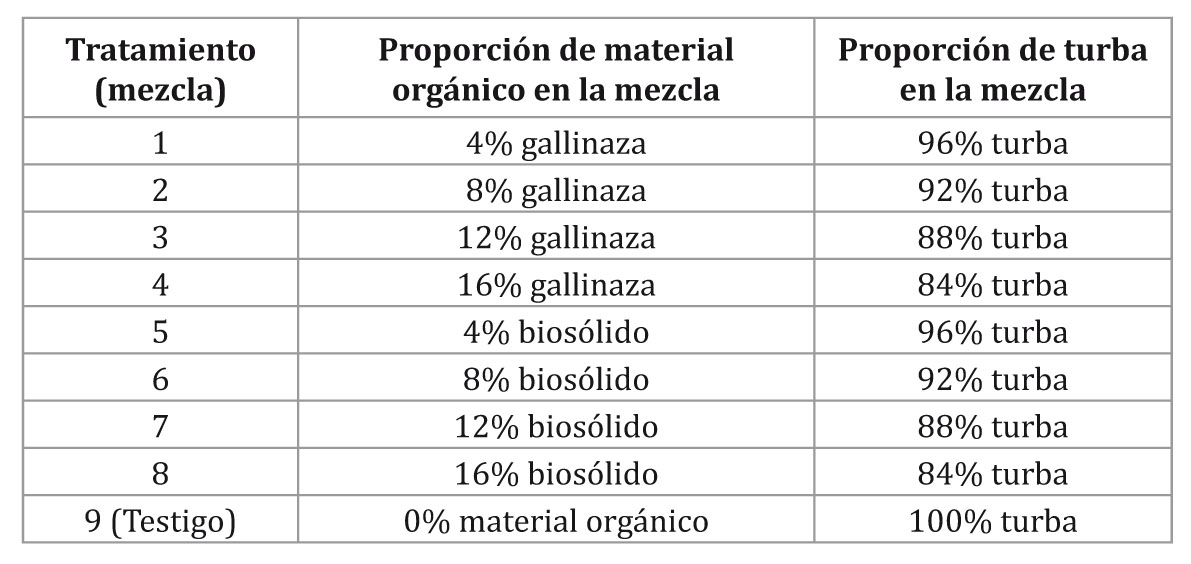Effect of poultry manure and biosolid mixed with European turbe for cucurbit seedling production
Keywords:
Cucumis sativus L., Cucurbita pepo L., seedling, manure, plant nutritionAbstract
In Mexico, Sphagnum turbe (peat moss) is the main substrate used for the production of vegetable seedlings in polystyrene trays. It is imported and thus has an elevated price, therefore some lower cost alternatives need to be addressed. This work proposes a mixture of peat with local organic materials as poultry manure (PM) and biosolid (B) to produce cucumber (Cucumis sativus L.) and zucchini (Cucurbita pepo L.) seedlings. Eight mixtures of organic material-peat were evaluated for each species: 1) 4% PM + 96% peat; 2) 8% PM + 92% peat; 3) 12% PM + 88% peat; 4) 16% PM + 84% peat; 5) 4% B + 96% peat; 6) 8% B + 92% peat; 7) 12% B + 88% peat; 8) 16% B + 84% peat, and 100% peat as control. Compared with the control, the mixture with 16% of biosolid affected positively SPAD (Soil Plant Analysis Development) units, stem diameter and leaf area in cucumber seedlings, while the mixture with 12% of poultry manure increased aerial and total dry weight (P ≤ 0.05). In zucchini, the mixture with 16% of poultry manure increased leaf area (P ≤ 0.05). No significant differences were found in height, root dry weight and seedling balance in both species and mixtures. We concluded that use of peat moss mixed with poultry manure or biosolid represents an important technical and economic alternative for cucumber and zucchini seedling production.

Downloads
Published
Issue
Section
License
Aquellos autores/as que tengan publicaciones con esta revista, aceptan las Políticas Editoriales.



